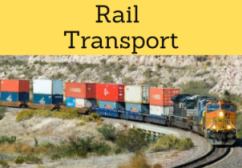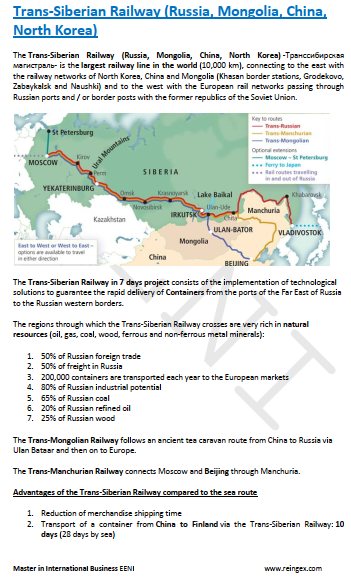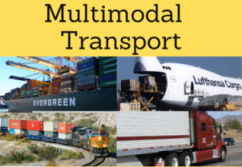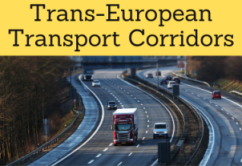Trans-Siberian Railway

Trans-Siberian Railway (Russia, Mongolia, China, North Korea)
- Introduction to the Trans-Siberian Railway: Russia, Mongolia and North Korea
- Main features of the Trans-Siberian Railway (Russia, Mongolia, China, North Korea)
- Trans-Mongolian railway
- Trans-Manchurian railway
- Trans-Siberian in 7 days project
- Advantages of the Trans-Siberian Railway compared to the sea route
- Countries in the area of influence of the Trans-Siberian Railway: Belarus, Poland, Germany, Estonia, Latvia, Lithuania, Finland, South Korea, Japan, Kazakhstan, Uzbekistan
- The Trans-Siberian Railway and the
- The Trans-Siberian Railway (Russia, Mongolia, China, North Korea) and the New Silk Road


The Subject «Trans-Siberian Railway (Russia, Mongolia, China, North Korea)» belongs to the following Online Programs taught by EENI Global Business School:
Transportation Courses: Road, Railway, Multimodal.

Diploma: International Transport.

Masters: International Transport, International Business.
Doctorate: Global Logistics, World Trade.
Languages:  .
Summary in
.
Summary in  Ferrocarril Transiberiano
Ferrocarril Transiberiano
 Chemin de fer transsibérien
Chemin de fer transsibérien  Caminho de ferro Transiberiano.
Caminho de ferro Transiberiano.
Sample - Trans-Siberian Railway (Russia, Mongolia, China, North Korea)


Trans-Siberian Railway (Russia, Mongolia, China, North Korea).
The Trans-Siberian Railway (Russia, Mongolia, China, North Korea)
-Транссибирская магистраль- is the largest railway line in the world (10,000 km), connecting to the east with the railway networks of North Korea,
China and Mongolia (Khasan border stations, Grodekovo, Zabaykalsk and Naushki) and to the west with the European rail networks passing through Russian ports and / or border posts with the former republics of the Soviet Union.
The Trans-Siberian Railway in 7 days project consists of the implementation of technological solutions to guarantee the rapid delivery of Containers
from the ports of the Far East of Russia to the Russian western borders.
- Electrified line
- Double via
- The Trans-Siberian Railway passes through 87 Russian cities
- 90% of the route passes through the territory of the Russian Federation
- Managed by Russian Railways
The regions through which the Trans-Siberian Railway crosses are very rich in natural resources (oil, gas, coal, wood, ferrous and non-ferrous metal minerals):
- 50% of Russian Foreign Trade
- 50% of freight in Russia
- 200,000 containers are transported each year to the European markets
- 80% of Russian industrial potential
- 65% of Russian coal
- 20% of Russian refined oil
- 25% of Russian wood
The Trans-Mongolian Railway follows an ancient tea caravan route
from China to Russia via Ulan Bataar and then on to Europe.
The Trans-Manchurian Railway connects Moscow and Beijing
through Manchuria.
Advantages of the Trans-Siberian Railway compared to the sea route
- Reduction of merchandise shipping time
- Transport of a container from China to Finland via the Trans-Siberian Railway: 10 days (28 days by sea)
- Hyundai uses the Trans-Siberian Railway to deliver products from Busan, South Korea, to the Taganrog Automobile Factory, Russia
- Minimization of cargo transhipments (cost and risk reduction)
- Low political risk (avoid Central Asian republics)
- Implementation of the Agreement to organize the transport of containers between Japan, Russia and Europe
The Trans-Siberian Railway is a natural extension of the Russian International Transport Corridor No. 2. (Russia, Belarus, Poland, Germany) and shares routes with the China-Mongolia-Russia Corridor.
The main container train routes along the Trans-Siberian Railway are:
- Nakhodka-Vostochnaya - Martsevo
- Nakhodka - Moscow
- Nakhodka - Brest (Belarus)
- Zabaykalsk / Nakhodka - Kaliningrad / Klaipeda (Lithuania)
- Beijing (China) - Moscow
- Kaliningrad / Klaipeda - Moscow
- Helsinki (Finland) - Moscow
- Berlin (Germany) - Moscow
- Brest (Belarus) - Ulan Bator (Mongolia)
- Hohhot (Mongolia) - Duisburg (Germany)
- Baltic countries (Estonia, Latvia, Lithuania, Finland, Poland) - Kazakhstan / Central Asia (Baltic - Transit)
- Nakhodka (Russia) - Alma Ata (Kazakhstan) / Uzbekistan
- Brest - Alma Ata
Countries in the area of influence of the Trans-Siberian Railway: Belarus, Poland, Germany, Estonia, Latvia, Lithuania, Finland, South Korea, Japan, Kazakhstan, Uzbekistan.
Asian regional economic communities related to the Trans-Siberian Railway (Russia, Mongolia, China, North Korea).
- Central Asia Cooperation (CAREC): Afghanistan, Azerbaijan, China, Kazakhstan, Kyrgyzstan, Mongolia, Pakistan, Tajikistan, Turkmenistan and Uzbekistan
- Shanghai Cooperation Organization: Kazakhstan, China, Kyrgyzstan, Russia, Tajikistan and Uzbekistan
- Organization for Cooperation between Railways (OSJD): China, Mongolia, Russia
- China is a member of:
- Russia is a member of:
- China and Russia are members of the APEC and Africa-BRICS Countries Cooperation
- Mongolia is a member of the Asia-Africa Growth Corridor
Related Trade Agreements
- Russia
- Trade Agreements of Russia: the ASEAN, the EU, Andean Community, Armenia, Belarus, Azerbaijan, Georgia, Kyrgyzstan, Serbia, Moldova, Ukraine and New Zeeland
- Free Trade Agreement between Russia, Belarus and Kazakhstan
- Customs Union Russia-Vietnam
- Russia has a Trade Agreement with Cameroon
- Chinese Trade Agreements: the ASEAN, Singapore, Pakistan, New Zealand, Peru, Chile, the EU, Andean Community
- Asia-Pacific Trade Agreement: Bangladesh, China, India, Mongolia and Sri Lanka
Major Asian institutions related to the corridor
- Boao Forum for Asia
- Asia Cooperation Dialogue
- ESCAP
- Asian Development Bank
- Colombo Plan
The main Religions of the region of the Trans-Siberian Railway (Russia, Mongolia, China, North Korea) are:
The Trans-Siberian Railway (Russia, Mongolia, China, North Korea) belongs to the:
- Orthodox Economic Area
- Central Eurasian Economic Area
- Sinic Economic Area

Related Corridors to the Silk Road
- Bangladesh-Myanmar Corridor
- Asia-Africa Corridor
- China-Central-West Asia Corridor
- Almaty-Bishkek Corridor
- China-Pakistan Corridor
- East-West Corridor (Myanmar-Vietnam)
- North-South Corridor (India-Russia)
- India-Afghanistan Corridor
- Europe-Caucasus-Asia Corridor
- Afghanistan-Turkey Corridor
- Corridor of the Ashgabat Agreement
- Trans-Caspian Corridor
- Kyrgyzstan-Iran Corridor
- Islamabad-Istanbul Corridor
- Nanning-Singapore Corridor

(c) EENI Global Business School (1995-2024)
We do not use cookies
Top of this page



